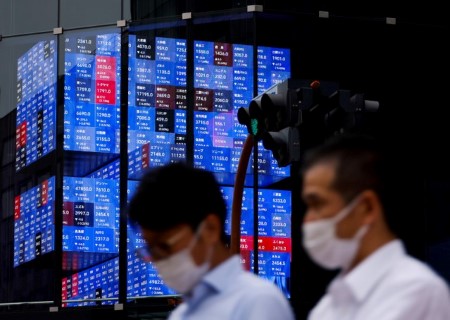




Policy Rate Updates: Double cut finale
 DOWNLOAD
DOWNLOAD

Monthly Economic Update: One for the road
 DOWNLOAD
DOWNLOAD

Inflation Update: Still low, still slow
 DOWNLOAD
DOWNLOAD


China GDP eyed as global cross currents swirl

Oct 18 – Asian financial markets brace for Chinese GDP figures on Wednesday, the key number in a batch of Chinese indicators to be released as investors also try to navigate a heavy flow of global economic, market and geopolitical cross currents.
Wall Street closed flat to slightly lower on Tuesday, after forecast-busting US retail sales data stoked expectations for another Fed rate hike by year-end and pushed Treasury bond yields sharply higher.
This was set against some upbeat Q3 results from Wall Street giants like Bank of America, although chipmakers fell after the US government said it planned to halt shipments of advanced artificial intelligence chips to China.
On top of that, the Middle East crisis appeared to deepen significantly after Palestinian health authorities said an Israeli air strike on a hospital in Gaza killed around 500 people. Israel has denied conducting the attack. This comes on the eve of President Joe Biden’s planned visit to Israel on Wednesday.
Short-dated US bond yields on Tuesday surged to new historic peaks – the two-year yield near 4.25% and the five-year yield nudging 4.90%, levels last seen in 2006 and 2007, respectively.
Blame bumper US retail sales, which also sparked a spree of upward revisions to US growth forecasts. The Atlanta Fed’s GDPNow model is now running at 5.4% annualized growth for Q3.
Compare that with China.
Annualized and year-on-year growth measures are different, but the general picture is still one of a booming US and sluggish China – figures on Wednesday are expected to show a 4.4% annual rate of growth in the July-September period.
That’s the median estimate in a Reuters poll of 60 economists, and would mark a notable slowdown from 6.3% in Q2. The poll’s range is 3.5% to 5.1%. Bear in mind that the government’s 2023 GDP goal is for growth of around 5%.
Staying in China, the country’s largest private property developer Country Garden is lurching toward defaulting on its offshore debt if it is deemed not to have made a USD 15 million coupon payment on Tuesday.
Non-payment of this tranche will trigger cross defaults in other bonds. With nearly USD 11 billion of offshore bonds and USD 6 billion of offshore loans, a Country Garden default would tee up one of China’s biggest corporate debt restructurings.
The property sector has been a major drag on growth, a driver of deflationary pressures, and a trigger for the huge outflows from China’s stocks, bonds, and currency this year.
The US dollar, meanwhile, is creeping higher against Asia’s two biggest currencies, pushing Japan’s yen and China’s yuan back down to key areas that their central banks are sure to be monitoring closely – 150.00 yen and September’s 16-year high above 7.34 yuan.
Here are key developments that could provide more direction to markets on Wednesday:
– China GDP (Q3)
– China retail sales, investment, unemployment, industrial production (September)
– US President Biden visit to Israel
(By Jamie McGeever; Editing by Josie Kao)
This article originally appeared on reuters.com





 By Reuters
By Reuters